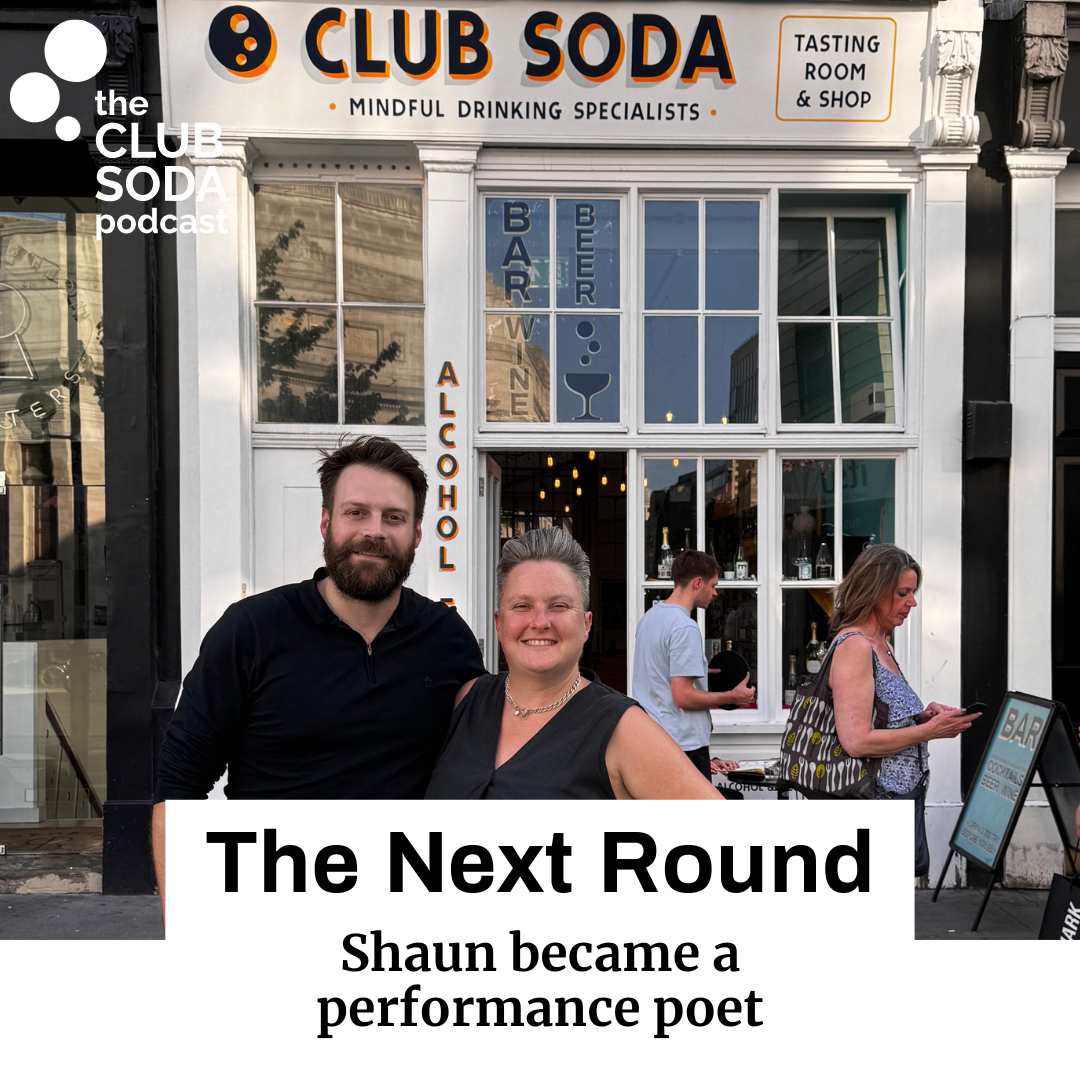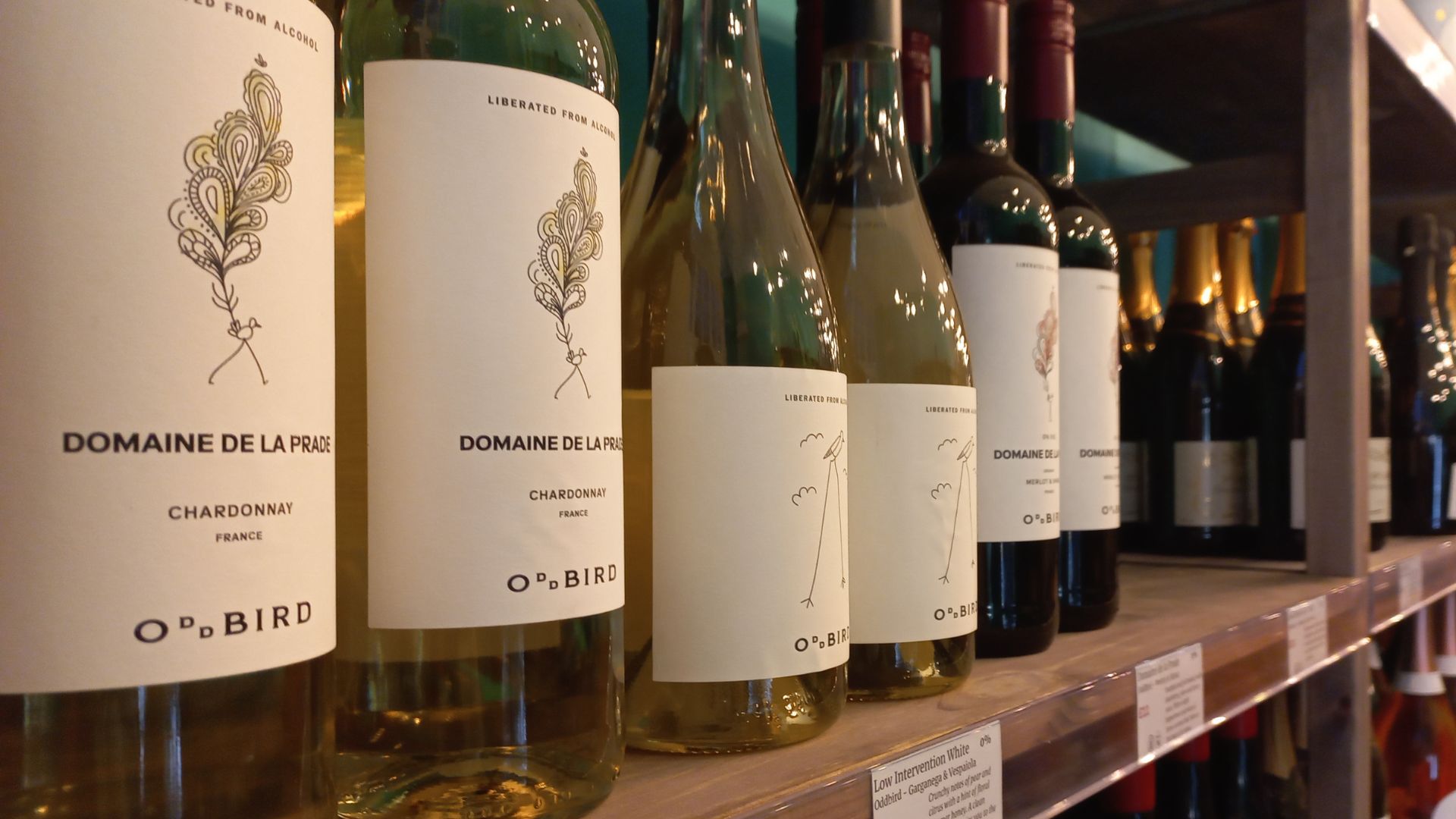
This website uses cookies to improve your experience. We'll assume you're ok with this, but you can opt-out if you wish. Read More
The Next Round: What happens after you change your drinking?

Buying good alcohol-free wine can be challenging.
While wine producers are working hard to improve their offerings, slower development processes in the wine industry mean that alcohol-free versions haven’t come to market as strongly in categories such as beer. But with specialist producers springing up, alcohol-free wines are constantly improving. And there are now great tasting alcohol-free white and sparkling wines, and even the emergence of fantastic alcohol-free reds.
Before we dive into the subject of how alcohol-free wine is made, you might want to check out our blog about 0.5% and alcohol-free to get a clear picture of what we mean when we talk about alcohol-free wine.
The winemaking process involves a big time commitment. Vineyards don’t just make wine; they also tend to their land and grow the grapes used to make their wine. Grapes are harvested, and the winemakers will then set about fermenting them. This means there is just one chance each year to harvest healthy grapes, produce the wine, and then de-alcoholise it.
Where brewers can adjust their recipes regularly and experiment more frequently to hone their beer recipes, winemakers cannot. Wine is simply a fermentation of grapes. As a drink, it relies heavily on the alcohol content to bring viscosity and body to the glass. Once the alcohol is removed, you can be left with something that feels thin and does not coat the palate as a full-strength wine would.
The first generation of alcohol-free wines tended to lack complexity, particularly if heat had been applied to remove the alcohol. This method required boiling away the alcohol to remove it, which would result in some loss and compromise of flavour. You’ll have experienced this yourself if you’ve ever gone back to mulled wine once it has cooled down.
Red wine maintained a strong tannic character alcohol-free but often lacked rich flavour and complexity to support this. It tended, therefore, to be poorly balanced. Some of the older methods of removing alcohol could also increase the acidity of the wine, again affecting the balance of flavour.
Over the past few years, there has been significant investment in technology to dealcoholise wine. This is resulting better choices for wine drinkers who want to enjoy lower ABV versions of their favourite drinks.
Alcohol evaporates at a lower temperature than water (78°C as opposed to 100°C), but as we’ve seen, heating wine will damage the flavour. Vacuum distillation is a gentler way to remove the alcohol since the evaporation temperature of molecules is reduced as air pressure is reduced. So removing alcohol from wine in a vacuum reduces the damage done through intense heating. As such, the impact on the flavour of the wine is greatly reduced. Aromas can also be blended in after the alcohol is removed.
Other producers are using spinning cone technology. Wine is poured into fast-rotating columns, and the centrifugal force spreads the wine into a thin film. Nitrogen gas is then fed in from the bottom of the column to extract aromas and flavours. Once these are removed, the remaining liquid is passed through the column again, this time at a higher temperature, to remove the alcohol. The flavour and aroma essences are added back into the now dealcoholised wine. This is blended with unfermented grape juice to rebuild lost volume, creating flavoursome alcohol-free wines.
And finally, reverse osmosis is a process in which full-strength wine is passed through a filter that holds back the alcohol molecules. The rest of the liquid will pass through, in theory leaving you with the original wine, minus the alcohol. Sugar or grape concentrate is often used to replace any loss of mouthfeel owing to the lack of alcohol.
All these modern options for removing alcohol from wine require substantial investment in equipment or the shipping of wine to specialist processors. If you’ve ever wondered why an excellent alcohol-free wine is expensive, despite not carrying any alcohol duty, this is why. Taking the alcohol out of wine is a complicated and demanding process.
It’s generally true that with wine, you get what you pay for. So when it comes to alcohol-free wines, don’t be afraid to spend a little more.
It’s also important to judge a wine on its own merits. It’s natural to compare wines with others that we have drunk before. But notice if you find yourself saying, “it doesn’t taste like wine”, and ask yourself, “what does wine taste like?” There is almost infinite variety in the wine-drinking experience, with even the same grapes grown in different locations producing remarkably different wines.
Alcohol-free sparkling wines are a solid choice for celebrations, echoing the flavour profiles of prosecco, cava and champagne. Serving sparkling wines well chilled helps to reduce any oversweetness, pushing your focus towards effervescent bubbles and nose-tickling aromas. In this category, some rosé wines are now available, offering bursts of candy floss and softer fruit flavours.
One area of innovation is in the dealcoholisation of low intervention wines. There’s no consistent standard for what being low intervention means, but these types of natural wines are often hand harvest, fermented with natural yeasts in small batches, and brought to life with minimal intervention by the wine maker. By their nature, these types of wines tend to bring funky flavours to the glass, and so stand up well when their alcohol is removed. Alcohol-free low intervention whites and reds are a good choice.
Red wines generally tend to towards berry sweetness and a certain lightness. Expect young and subtle wines rather than huge, punchy and alcohol-heavy reds and you won’t be disappointed.
Supermarket and corner store wine is remarkable in many ways, especially as winemakers take naturally variable harvests and blend them to create consistent, low-cost wines year after year. But the one thing that these winemakers have not cracked is dealcoholisation. Although the occasional gem can be found from generalist suppliers, don’t expect to be blown away if you buy alcohol-free wines from supermarkets.
Wine is the fastest-growing alcohol-free drink category in North America, and suppliers like Better Rhodes stock a great selection for home delivery.
And if you’re in the UK, check Club Soda’s range of alcohol-free wines and alternatives for the wine occasion, like sparkling teas.
This website uses cookies to improve your experience. We'll assume you're ok with this, but you can opt-out if you wish. Read More
| Name | Domain | Purpose | Expiry | Type |
|---|---|---|---|---|
| wpl_user_preference | joinclubsoda.com | WP GDPR Cookie Consent Preferences. | 1 year | HTTP |
| PHPSESSID | www.tickettailor.com | PHP generic session cookie. | 55 years | HTTP |
| AWSALB | www.tickettailor.com | Amazon Web Services Load Balancer cookie. | 7 days | HTTP |
| YSC | youtube.com | YouTube session cookie. | 55 years | HTTP |
| Name | Domain | Purpose | Expiry | Type |
|---|---|---|---|---|
| VISITOR_INFO1_LIVE | youtube.com | YouTube cookie. | 6 months | HTTP |
| Name | Domain | Purpose | Expiry | Type |
|---|---|---|---|---|
| _ga | joinclubsoda.com | Google Universal Analytics long-time unique user tracking identifier. | 2 years | HTTP |
| sbjs_migrations | joinclubsoda.com | Sourcebuster tracking cookie | 55 years | HTTP |
| sbjs_current_add | joinclubsoda.com | Sourcebuster tracking cookie | 55 years | HTTP |
| sbjs_first_add | joinclubsoda.com | Sourcebuster tracking cookie | 55 years | HTTP |
| sbjs_current | joinclubsoda.com | Sourcebuster tracking cookie | 55 years | HTTP |
| sbjs_first | joinclubsoda.com | Sourcebuster tracking cookie | 55 years | HTTP |
| sbjs_udata | joinclubsoda.com | Sourcebuster tracking cookie | 55 years | HTTP |
| sbjs_session | joinclubsoda.com | SourceBuster Tracking session | Session | HTTP |
| Name | Domain | Purpose | Expiry | Type |
|---|---|---|---|---|
| mailchimp_landing_site | joinclubsoda.com | Mailchimp functional cookie | 28 days | HTTP |
| __cf_bm | tickettailor.com | Generic CloudFlare functional cookie. | Session | HTTP |
| NID | google.com | Google unique id for preferences. | 6 months | HTTP |
| Name | Domain | Purpose | Expiry | Type |
|---|---|---|---|---|
| _ga_10XZMT03ZM | joinclubsoda.com | --- | 2 years | --- |
| AWSALBCORS | www.tickettailor.com | --- | 7 days | --- |
| cf_clearance | tickettailor.com | --- | 1 year | --- |
| VISITOR_PRIVACY_METADATA | youtube.com | --- | 6 months | --- |
Join Club Soda for 10% off your first order of drinks for UK delivery. Plus get our latest news and special offers for members to choose better drinks, change your drinking and connect with others.
If you get an error message with this form, you can also sign up at eepurl.com/dl5hPn